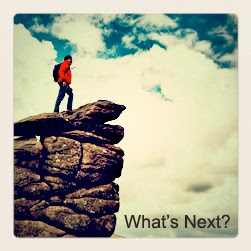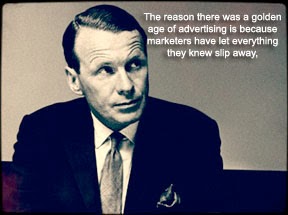A very dear friend of mine tends to look at the holidays and upcoming new year as an end. It's the time to say goodbye to the old and, for those unfortunate souls, another reminder that all those big dreams and plans haven't come to fruition.
"And so we cling on desperately
to fleeting routines and comforts
until they slip away. Already gone,
long before the loss grabs hold."
— Rich Becker, 2013
"And so we cling on desperately
to fleeting routines and comforts
until they slip away. Already gone,
long before the loss grabs hold."
— Rich Becker, 2013
But I've never really seen it this way because none of those big dreams and plans deserve to be mourned. They were gone a long time ago, assuming they ever got started.
Looking back on them with any sense of despondency would be akin to a tree reflecting on its thinnest rings with regret. But nature doesn't see it this way. While some years are more fruitful than others, we can always be grateful that there was any ring at all. And then even more grateful that every year is a blank slate, with an equal potential for harsh or heathy seasons. You get to decide how to fill it.
How to measure the potential of a new year while being grateful for the last.
The holiday card I sent out this year included an illustration of a drummer boy. It was inspired by an old print that my grandmother had shellacked to a piece of wood. I always liked it so I recast it by drawing a minimal-line freehand version before porting it into my computer for color.
The song, The Little Drummer Boy, has remarkable depth to it. It's about a boy who arrives at the manger to see the new born king much like the three wise men did. But unlike the wise men, the boy didn't have the foresight to bring a gift. So he plays his drum and it turns out to be greatest gift of all.
Faith doesn't necessitate value in the story, even if it is likely tied to Job 34:9 — It profits a man nothing when he tries to please God. While the lesson is meant to remind us that nothing makes God happier than when we use the talents He has given us, it turns out that nothing makes us happier either.
And so, as simple as it seems, that became part of my holiday greeting this year in just two words. Play on. Play on, with your talents ahead of everything else you do and next year will be your best. Merry Christmas. Happy holidays. Good night and good luck.
A quick look back at the most viewed posts here before we wrap the year.
1. Five Things I Wish Every Advertiser, Marketer, And Pro Knew. Five lessons confined to a single post, ranging from the difference between a content strategy and marketing strategy to how it takes more than being clever to break through the clutter. My favorite is in taking the effort to be something other than a noun.
2. Five Monkey Wrenches For The Future Of Public Relations. Everyone knows that public relations is at a crossroads, but not everyone considers how they might overcome those challenges. Public relations owes itself the opportunity to thrive on its strategic merit.
3. Will Automations Steal The Soul From Social? Anyone who knows me, knows that this is one of my favorite discussion points in regard to social media. It never seems to get old because people continue to count the wrong measurements anyway.
4. Teaching People To Write Requires A Contradictory Approach. Several people have asked me to write more stories about writing. It's too early to say what next year will look like, but writing will be given a lift in priority. This one was fun because it debunks the need for too many rules for writing.
5. Changing Creative: Did Fans Dictate Days Of Our Lives. If you want to see the kind of impact social media has made on our society, take some time to read the comments. Almost 100 fans chimed in on how they felt about one of the few remaining soap operas. Marketing is seldom so exciting.
6. Big Data Will Be A Blind Spot For Marketers. Everyone keeps talking about big data, but the science of it is less important than the art. Measurement requires much more than numbers. Marketers need to invest more time in the murkier waters of behavioral science.
7. Put People Ahead Of Platforms If You Want To Succeed. There were several associates of mine who said my subhead would have made the better headline. Had I retitled the article, we would have called it: Five Areas Of Focus To Make You More People Centric.
8. Networks Drive Discussions. People Drive Networks. Long before writing about the algorithm changes taking place to Facebook right now, I was challenging my social media students to stop prioritizing social networks based on popularity because popularity is subject to change. The post includes my social media deck for 2013.
9. Bob Fass Beats Everyone In Social Media. Good Morning, 1963. If anyone accidentally influenced me this year, it would be Bob Fass. Without ever knowing it, he developed the formula for free flow social media long before the Internet made it possible and smart phones made it popular.
10. Killing Me Softly: Cancer. Perspective can be your adversary or ally. Cancer certainly ensured this was a thin ring year for me, but it would be impossible for me not to be grateful in the wake of it.
Those were the most read posts this year, a fraction of a small collection written. Thank you for reading them, sharing them, and — most importantly — finding the time to respond to them. I look forward to many more great discussions ahead. My next post here will likely be Jan. 8, 2014.
If you want to keep up weekly, subscribe here. You can also find more creative content here or here next year, along with eclectic reviews or segments about something called shadow management. Aside from those outlets, there will be a few more surprises in the new year. I hope so for you too.
Looking back on them with any sense of despondency would be akin to a tree reflecting on its thinnest rings with regret. But nature doesn't see it this way. While some years are more fruitful than others, we can always be grateful that there was any ring at all. And then even more grateful that every year is a blank slate, with an equal potential for harsh or heathy seasons. You get to decide how to fill it.
How to measure the potential of a new year while being grateful for the last.
The holiday card I sent out this year included an illustration of a drummer boy. It was inspired by an old print that my grandmother had shellacked to a piece of wood. I always liked it so I recast it by drawing a minimal-line freehand version before porting it into my computer for color.
The song, The Little Drummer Boy, has remarkable depth to it. It's about a boy who arrives at the manger to see the new born king much like the three wise men did. But unlike the wise men, the boy didn't have the foresight to bring a gift. So he plays his drum and it turns out to be greatest gift of all.
Faith doesn't necessitate value in the story, even if it is likely tied to Job 34:9 — It profits a man nothing when he tries to please God. While the lesson is meant to remind us that nothing makes God happier than when we use the talents He has given us, it turns out that nothing makes us happier either.
And so, as simple as it seems, that became part of my holiday greeting this year in just two words. Play on. Play on, with your talents ahead of everything else you do and next year will be your best. Merry Christmas. Happy holidays. Good night and good luck.
A quick look back at the most viewed posts here before we wrap the year.
1. Five Things I Wish Every Advertiser, Marketer, And Pro Knew. Five lessons confined to a single post, ranging from the difference between a content strategy and marketing strategy to how it takes more than being clever to break through the clutter. My favorite is in taking the effort to be something other than a noun.
2. Five Monkey Wrenches For The Future Of Public Relations. Everyone knows that public relations is at a crossroads, but not everyone considers how they might overcome those challenges. Public relations owes itself the opportunity to thrive on its strategic merit.
3. Will Automations Steal The Soul From Social? Anyone who knows me, knows that this is one of my favorite discussion points in regard to social media. It never seems to get old because people continue to count the wrong measurements anyway.
4. Teaching People To Write Requires A Contradictory Approach. Several people have asked me to write more stories about writing. It's too early to say what next year will look like, but writing will be given a lift in priority. This one was fun because it debunks the need for too many rules for writing.
5. Changing Creative: Did Fans Dictate Days Of Our Lives. If you want to see the kind of impact social media has made on our society, take some time to read the comments. Almost 100 fans chimed in on how they felt about one of the few remaining soap operas. Marketing is seldom so exciting.
6. Big Data Will Be A Blind Spot For Marketers. Everyone keeps talking about big data, but the science of it is less important than the art. Measurement requires much more than numbers. Marketers need to invest more time in the murkier waters of behavioral science.
7. Put People Ahead Of Platforms If You Want To Succeed. There were several associates of mine who said my subhead would have made the better headline. Had I retitled the article, we would have called it: Five Areas Of Focus To Make You More People Centric.
8. Networks Drive Discussions. People Drive Networks. Long before writing about the algorithm changes taking place to Facebook right now, I was challenging my social media students to stop prioritizing social networks based on popularity because popularity is subject to change. The post includes my social media deck for 2013.
9. Bob Fass Beats Everyone In Social Media. Good Morning, 1963. If anyone accidentally influenced me this year, it would be Bob Fass. Without ever knowing it, he developed the formula for free flow social media long before the Internet made it possible and smart phones made it popular.
10. Killing Me Softly: Cancer. Perspective can be your adversary or ally. Cancer certainly ensured this was a thin ring year for me, but it would be impossible for me not to be grateful in the wake of it.
Those were the most read posts this year, a fraction of a small collection written. Thank you for reading them, sharing them, and — most importantly — finding the time to respond to them. I look forward to many more great discussions ahead. My next post here will likely be Jan. 8, 2014.
If you want to keep up weekly, subscribe here. You can also find more creative content here or here next year, along with eclectic reviews or segments about something called shadow management. Aside from those outlets, there will be a few more surprises in the new year. I hope so for you too.
















































